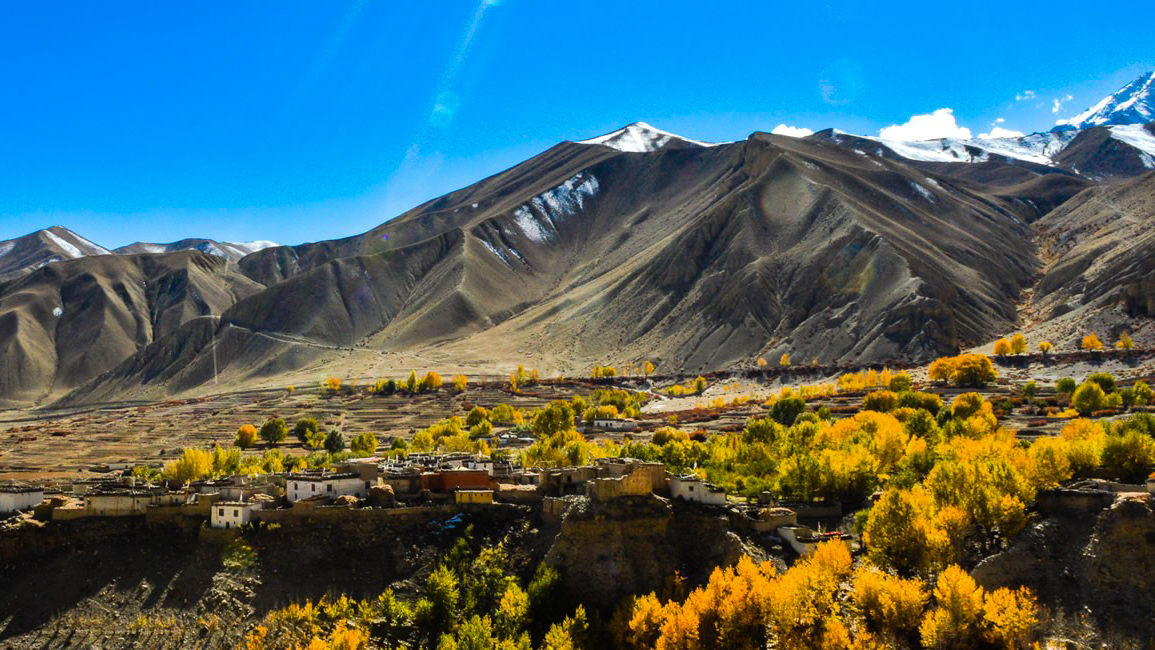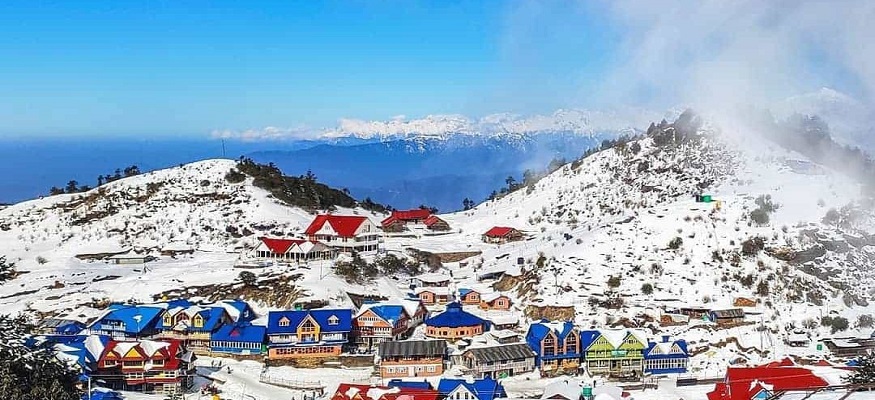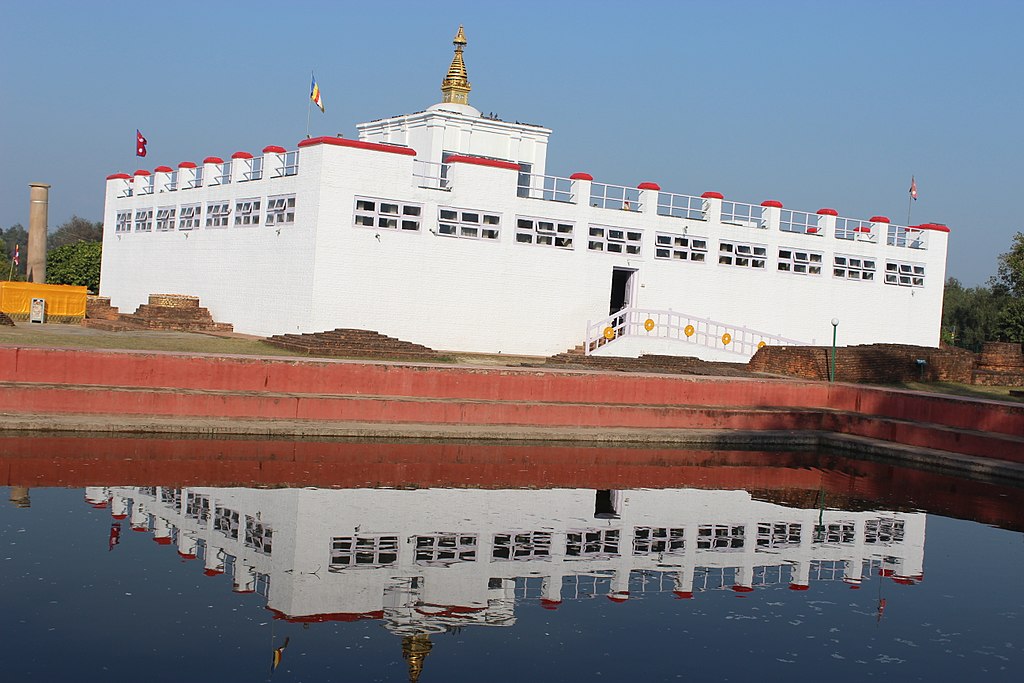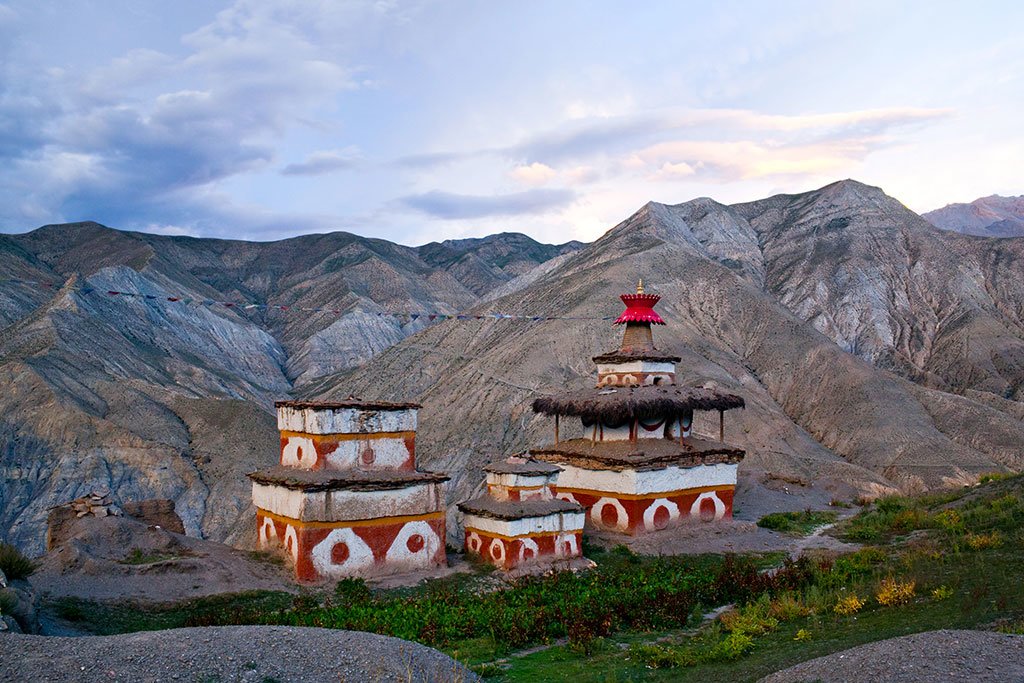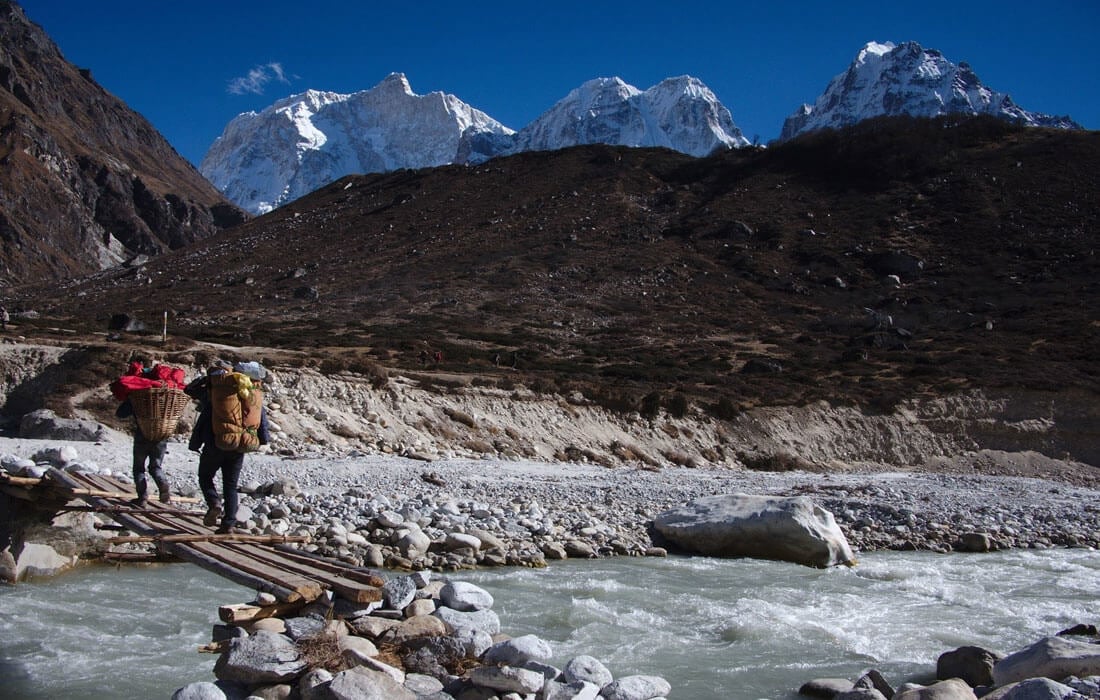 About this Trip
About this Trip
The Ghorepani Poon Hill Trek represents the perfect introduction to the magic of Himalayan trekking, offering an experience that distills the essence of Nepal's mountain grandeur into a short, accessible journey. What makes this trek exceptional is its remarkable efficiency in delivering world-class mountain views, authentic cultural experiences, and natural beauty within a timeframe manageable for almost any traveler.
The trek follows a beautifully designed loop that begins and ends near Pokhara, climbing steadily through changing landscapes to reach the panoramic viewpoint of Poon Hill before descending through different villages and ecosystems. This circular route creates surprising diversity within a relatively short distance, allowing trekkers to experience new terrain and communities throughout the journey rather than simply retracing their steps.
The centerpiece of the trek is undeniably the sunrise experience at Poon Hill. This perfectly positioned natural viewpoint offers one of Nepal's most spectacular mountain panoramas, where the first light of dawn illuminates a majestic arc of snow-capped peaks, transforming them from ghostly silhouettes to golden spires as the sun rises. This moment, often accompanied by the soft flutter of prayer flags and perhaps the distant sound of mountain birds, creates what many describe as a profound and moving connection to the Himalayan landscape.
The cultural dimension adds remarkable depth to the journey. Villages along the route, particularly Ghandruk and Ulleri, preserve traditional architecture with stone houses featuring distinctive slate roofs and intricate woodwork. Local communities maintain traditional livelihoods while adapting thoughtfully to tourism, offering authentic interactions with working farms, water-powered mills, and cottage industries. Trekkers frequently find themselves spontaneously invited to join local celebrations or to sample homemade raksi (rice spirit) while learning about mountain life from their hosts.
Physically, the trek presents a perfect balance of challenge and accessibility. While the famous stone staircase to Ulleri tests even experienced hikers, the overall elevation gain remains moderate, and daily hiking distances are reasonable for anyone with basic fitness. The maximum altitude of 3,210m virtually eliminates serious altitude sickness concerns, allowing trekkers to focus on enjoying the journey rather than acclimatization worries.
Perhaps most remarkably, the Ghorepani Poon Hill trek creates a sense of accomplishment and connection to the Himalayas that belies its short duration. Many trekkers describe feeling they've experienced the true essence of Nepal's mountains despite the trek's modest length, returning with magnificent photographs, cultural insights, and the quiet confidence that comes from completing a genuine mountain journey.
The Ghorepani Poon Hill Trek represents the perfect introduction to the magic of Himalayan trekking, offering an experience that distills the essence of Nepal's mountain grandeur into a short, accessible journey. What makes this trek exceptional is its remarkable efficiency in delivering world-class mountain views, authentic cultural experiences, and natural beauty within a timeframe manageable for almost any traveler.
The trek follows a beautifully designed loop that begins and ends near Pokhara, climbing steadily through changing landscapes to reach the panoramic viewpoint of Poon Hill before descending through different villages and ecosystems. This circular route creates surprising diversity within a relatively short distance, allowing trekkers to experience new terrain and communities throughout the journey rather than simply retracing their steps.
The centerpiece of the trek is undeniably the sunrise experience at Poon Hill. This perfectly positioned natural viewpoint offers one of Nepal's most spectacular mountain panoramas, where the first light of dawn illuminates a majestic arc of snow-capped peaks, transforming them from ghostly silhouettes to golden spires as the sun rises. This moment, often accompanied by the soft flutter of prayer flags and perhaps the distant sound of mountain birds, creates what many describe as a profound and moving connection to the Himalayan landscape.
The cultural dimension adds remarkable depth to the journey. Villages along the route, particularly Ghandruk and Ulleri, preserve traditional architecture with stone houses featuring distinctive slate roofs and intricate woodwork. Local communities maintain traditional livelihoods while adapting thoughtfully to tourism, offering authentic interactions with working farms, water-powered mills, and cottage industries. Trekkers frequently find themselves spontaneously invited to join local celebrations or to sample homemade raksi (rice spirit) while learning about mountain life from their hosts.
Physically, the trek presents a perfect balance of challenge and accessibility. While the famous stone staircase to Ulleri tests even experienced hikers, the overall elevation gain remains moderate, and daily hiking distances are reasonable for anyone with basic fitness. The maximum altitude of 3,210m virtually eliminates serious altitude sickness concerns, allowing trekkers to focus on enjoying the journey rather than acclimatization worries.
Perhaps most remarkably, the Ghorepani Poon Hill trek creates a sense of accomplishment and connection to the Himalayas that belies its short duration. Many trekkers describe feeling they've experienced the true essence of Nepal's mountains despite the trek's modest length, returning with magnificent photographs, cultural insights, and the quiet confidence that comes from completing a genuine mountain journey.

From $0
Price Varies from Group Size
Success
Here goes about why the success toast occurred.
 Itinerary
Itinerary
Arrival in Kathmandu (1,400m)
Kathmandu to Pokhara (820m)
Pokhara to Nayapul to Tikhedhunga (1,570m)
Tikhedhunga to Ghorepani (2,840m)
Ghorepani to Poon Hill (3,210m) to Tadapani (2,630m)
Tadapani to Ghandruk (1,940m)
Ghandruk to Nayapul to Pokhara
Pokhara
Pokhara to Kathmandu
Departure from Kathmandu
 Services
Services
Includes
- Specialized bilingual guide familiar with the Annapurna region
- Private Transport where applicable
- Tourist bus/flight between Kathmandu and Pokhara
- Daily meals on the trek: breakfast, lunch, and dinner
- Services of an experienced guide and porter during the trek
- All essential trekking permits, including ACAP (Annapurna Conservation Area Permit) and TIMS
- Accommodation throughout the trek (teahouses)
Excludes
- Additional accommodation due to weather delays or early completion
- Comprehensive travel and medical insurance for the trek
- Gratuities for the guides, porters, and trekking support staff
- International flights and entry visa fees for Nepal
- Personal trekking equipment and gear (sleeping bags, jackets, etc.)
- Extra food and drinks beyond the standard meals provided
- Hot showers and battery charging at teahouses (pay per use)
 Good to Know
Good to Know
Basic fitness preparation is recommended, focusing particularly on stair climbing to prepare for the Ulleri ascent. While teahouses are available throughout, bringing your own sleeping bag is advisable for comfort. Pack for temperatures ranging from pleasantly warm days to cool nights. ATMs are available in Pokhara but not on the trek; carry sufficient Nepali rupees. Water purification tablets or a filter are essential to reduce plastic waste from bottled water. The Poon Hill sunrise is weather-dependent; occasionally clouds obscure views, so be prepared for this possibility. Consider bringing small gifts like school supplies for village children or photographs from your home country to share with local families.
Wildlife Encounters
While trekking, keep an eye out for:
Various deer species including barking deer, Langur monkeys in forested areas, Over 250 bird species including: Colorful Himalayan monals, Danphe (Nepal's national bird), Various thrushes and laughingthrushes, Sunbirds and flowerpeckers, Himalayan griffon vultures, Numerous butterfly species, particularly during spring, Small mammals like red pandas (extremely rare sightings)
 Reviews
Reviews
 FAQs (Frequently Asked Questions)
FAQs (Frequently Asked Questions)
Your queries are answered.
When is the best time to do the Poon Hill Trek?
October to November offers clear mountain views and stable weather. March to April features spectacular rhododendron blooms that transform forests into a riot of red, pink, and white flowers. Winter (December-February) brings cooler temperatures but often clear skies and fewer trekkers. The monsoon season (June-September) brings leeches and obscured mountain views, making it the least ideal time.
Do I need a guide or porter for this trek?
While the Poon Hill Trek can be done independently as the trail is well-marked and frequented, a guide enhances the experience through cultural and natural interpretation. Porters make the journey more comfortable by carrying the bulk of your gear, allowing you to enjoy the scenery rather than struggling with heavy packs. Both guides and porters contribute to the local economy and employment.
What permits do I need for the Poon Hill Trek?
You'll need the Annapurna Conservation Area Permit (ACAP, approximately $30) and TIMS (Trekkers' Information Management System) card (approximately $10). These can be arranged through your trekking agency or obtained in Kathmandu at the Nepal Tourism Board office or in Pokhara.
What type of accommodation can I expect?
The entire route features teahouses (mountain lodges) ranging from basic to relatively comfortable. Expect twin rooms with simple beds and shared bathrooms. Most teahouses have dining areas serving hot meals and some offer hot showers (for an additional fee) and WiFi connections. Accommodations in Ghandruk tend to be more developed with better facilities than those in smaller settlements.
How should I prepare physically for this trek?
Focus on cardiovascular fitness and leg strength, particularly stair climbing to prepare for the steep ascents. Walking 4-5 hours several times a week with a light pack in the months before your trek provides good preparation. The trek is accessible to anyone with reasonable fitness, including older trekkers and families with older children.
Will I have problems with altitude sickness?
Altitude sickness is rarely a significant concern on the Poon Hill Trek as the maximum elevation of 3,210m is below the 3,500m threshold where altitude sickness becomes more common. The gradual ascent profile also helps prevent problems. Basic precautions like proper hydration and avoiding alcohol are still recommended.
What is the sunrise experience at Poon Hill like?
Trekkers typically wake around 4:30 am and hike about 45 minutes by headlamp to reach the viewpoint before dawn. Several hundred people may gather during peak season. As the sky lightens, the panorama of mountains emerges, culminating in golden light striking the peaks as the sun rises. The vista spans approximately 250 degrees from Dhaulagiri in the west to Annapurna South and Machapuchhre in the east.
What should I pack for the Poon Hill Trek?
Essentials include good hiking boots, warm layers (including a down jacket for mornings/evenings), a headlamp for the pre-dawn Poon Hill hike, sun protection, a water purification system, basic first aid supplies, and a sleeping bag. A complete packing list should be provided by your trekking agency, but the requirements are simpler than for longer, higher altitude treks.
How reliable is the WiFi and phone connectivity?
Most villages on the Poon Hill Trek have cell phone coverage and many teahouses offer WiFi (sometimes for a fee). Connection quality varies from reasonable to intermittent depending on location and weather. Local SIM cards with data plans work in most areas of the trek. However, connections may be slow, and it's wise to inform family and friends that communication might be limited.
How much extra money should I budget beyond the package cost?
Beyond the package cost, budget approximately $10-15 per day for additional expenses like hot showers ($2-4), battery charging ($2-3), WiFi access where available ($2-5), bottled water (or bring purification methods), snacks, and optional hot drinks. Prices increase slightly with altitude due to transportation costs. Ghandruk and Ghorepani have small shops selling snacks, basic toiletries, and some trekking supplies at elevated prices.
Is the Poon Hill Trek suitable for families with children?
Yes, the trek is one of Nepal's most family-friendly options for those with children aged approximately 10 and above, depending on the child's hiking experience and fitness. The relatively short distances, good infrastructure, and moderate altitude make it appropriate for family adventures. Some families choose to add an extra day or two to the standard itinerary to allow for a more relaxed pace with children.
What unique cultural experiences can I expect on this trek?
The trek passes through traditional Gurung and Magar villages, offering authentic cultural encounters. Highlights include visiting the Gurung museum in Ghandruk, observing traditional architecture and agricultural practices, and potentially experiencing local music and dance if your visit coincides with festivals or community gatherings. Many locals have fascinating stories of service in Gurkha regiments, and older residents are often happy to share tales of how the region has changed with tourism development.




